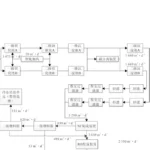In recent years, with the steady growth of the scale of sewage treatment in China, the amount of sludge generated as a by-product of sewage treatment has also increased. According to the Ministry of Housing and Construction's Statistical Yearbook of Urban Construction in China, as of the end of 2014, the total volume of urban sewage treatment in China reached 3,827,239,000 tonnes, while the volume of urban wet sludge generated was 21,430,000 tonnes, which does not include industrial sludge generated by industrial enterprises and parks treating sewage on their own.
On the one hand, sewage treatment costs huge sums of money, and on the other hand, due to the ineffective treatment of sludge, "sewage is treated in vain". A number of experts in the field of sludge research said that, without the treatment of sludge, sewage treatment is almost useless, nothing more than pollutants in the sewage treatment plant round, gathered in the sludge, and back to the environment.
Sludge contains many dyes and pollutants that are harmful to health. However, the types, concentrations, pathogenic mechanisms, routes of contamination, and damage to human health and the natural environment of contaminants in sludge are not yet known to the general public.
The hazards of sludge are more insidious, direct and difficult to treat and eliminate, with the vast majority of pollutants in sewage being concentrated in sludge. Whether it is sewage, waste gas, rubbish or sludge, they are all sources of pollution that may cause environmental problems. In terms of pollution equivalent, the problem of sludge is not smaller than that of rubbish, and it can even be said that the degree of pollution of this concentrated substance formed by sewage treatment may sometimes be even more harmful than that of rubbish.
Waste is rarely disposed of in the environment on a large scale by the thousands of tonnes; whereas sludge is often disposed of on a large scale in rivers, lakes, embankments, gullies and fields. The high water content makes it possible for pollutants in sludge to be washed into water bodies by rainwater, polluting groundwater through the soil, contaminating the surrounding air with odours and volatile organic compounds, and causing localised increases in the concentration of pollutants in the soil. From this point of view, compared with rubbish, the harm caused by sludge to the environment seems to be more hidden, but in fact, it is more direct and more difficult to treat and eliminate.
A significant sludge hazard is water pollution. Sludge that is not effectively treated can contaminate groundwater and surface water. Sludge is prone to secondary pollution of groundwater through erosion and infiltration of rainwater. Nitrogen and phosphorus enriched in sludge enter the surrounding water bodies or soil, and the excess nitrogen and phosphorus released enter surface water with the water circulation system, leading to eutrophication of surface water.
Again the key to ecological damage is heavy metal pollution. InSewage filter pressesDuring treatment, 70%-90% heavy metal elements will be transferred to the sludge by adsorption or precipitation. Some heavy metal elements mainly originate from industrial wastewater, such as cadmium and chromium. Some heavy metals in sludge may enter the food chain through fish, shrimp, etc. and return to the table. Meanwhile, malodour pollution is a kind of pollution that is easily generated during sludge treatment and disposal. Long-standing sludge hazards not only pollute the environment and threaten public health, but also eliminate the environmental protection effect of sewage treatment.
Reprint statement:
Parts of this article are reproduced from the Internet for readers' reference only, and the copyright belongs to the original author.
 Plate and frame chamber diaphragm filter presses
Plate and frame chamber diaphragm filter presses



